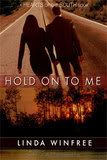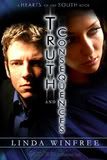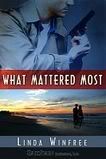How Do You Edit?
Did you know that Dean Koontz averages FORTY PASSES per page during edits?
 I learned that in Margie Lawson's Deep EDITS course last month (September). That's how he makes the International Bestseller List. His commitment to writing craft. His commitment to excellence.
I learned that in Margie Lawson's Deep EDITS course last month (September). That's how he makes the International Bestseller List. His commitment to writing craft. His commitment to excellence.
I don't happen to be a Koontz fan--too dark and gritty for me--but I can admire his work, his craft. Apply the principles to my work.
I had taken Margie's Empowering Character Emotions course several months ago and was amazed by the amount of information I took away. It really took my writing to a new level. IMHUO
And, interestingly, I had just taken a course with Ashley Grayson who said, "To be a master of your craft, master rhetoric." just days before I started Margie's class--in which she teaches...among other things...21+ different rhetorical devices.
I love it when things dovetail together that way. It makes me think of higher powers, karma, fate and destiny. For a minute, anyway.
At first, Deep EDITS felt overwhelming. It's so all-encompassing, so...well...deep. But once I got into it and started applying the principles to the manuscript I'm currently editing, Safe In Enemy Arms, and it all seemed to come together.
If you ever get the opportunity, I highly suggest either or both of those courses.
It's a lot of work, no way around that. She advocates analyzing your manuscript word by word, sentence by sentence, paragraph by paragraph, scene by scene.
So, based on her instructions and my own style, this is how I edit:
 I learned that in Margie Lawson's Deep EDITS course last month (September). That's how he makes the International Bestseller List. His commitment to writing craft. His commitment to excellence.
I learned that in Margie Lawson's Deep EDITS course last month (September). That's how he makes the International Bestseller List. His commitment to writing craft. His commitment to excellence.I don't happen to be a Koontz fan--too dark and gritty for me--but I can admire his work, his craft. Apply the principles to my work.
I had taken Margie's Empowering Character Emotions course several months ago and was amazed by the amount of information I took away. It really took my writing to a new level. IMHUO
And, interestingly, I had just taken a course with Ashley Grayson who said, "To be a master of your craft, master rhetoric." just days before I started Margie's class--in which she teaches...among other things...21+ different rhetorical devices.
I love it when things dovetail together that way. It makes me think of higher powers, karma, fate and destiny. For a minute, anyway.
At first, Deep EDITS felt overwhelming. It's so all-encompassing, so...well...deep. But once I got into it and started applying the principles to the manuscript I'm currently editing, Safe In Enemy Arms, and it all seemed to come together.
If you ever get the opportunity, I highly suggest either or both of those courses.
It's a lot of work, no way around that. She advocates analyzing your manuscript word by word, sentence by sentence, paragraph by paragraph, scene by scene.
So, based on her instructions and my own style, this is how I edit:
- Print whatever portion of the ms I'm going to tackle. I work one chapter at a time.
- Go through the ms and highlight:
~Blue-dialogue
~Yellow-internals
~Green-setting
~Red-non-verbal emotion
~Pink-visceral emotional effects
~Orange in margins-tension
~Purple in margins-sexual tension/romance build - Circle the last word of every sentence, look for ways to backload that sentence (and often find places I need to reword/restructure/rewrite).
- Make notes in the margin for changes, additions, deletions, etc.
- Make changes on the computer, do rewrites.
- Print it out.
- Read it aloud and make notes on any additional changes.
- Make changes on computer.
- Move on to next chapter.
That's where I'm at. Chapter 4. Slow. Relentless. Tortuous.
And worth every minute.
How do you edit?







2Comments:
I use the color highlighters, but not completely like you do. I also print a chapter at a time and work on that. I dig for better words, look for repititious words and just edit to make it better.
ROFL. You make my eyes cross, but you already know that.
I edit as I go. Write 15 pgs, go back the next day and edit it before moving on. Two steps forward, one step back, that's how I work. It's slow in the initial process, but it makes the end-editing process much smoother for me. Plus, I'm a perfectionist, and knowing I left something hanging or didn't get it "right" bugs the *&%! out of me. Because of that, when I'm done with a manuscript, it's already pretty-well polished. Then I give it a readthrough on the computer, tighten, cut, swap words if need be, then print and read through in hard copy.
I tried the color thing and all it did was make my eyes glaze over and my wrist hurt. What works for one person will never work for another. That's the cool part about writing, isn't it?
Post a Comment
<< Home